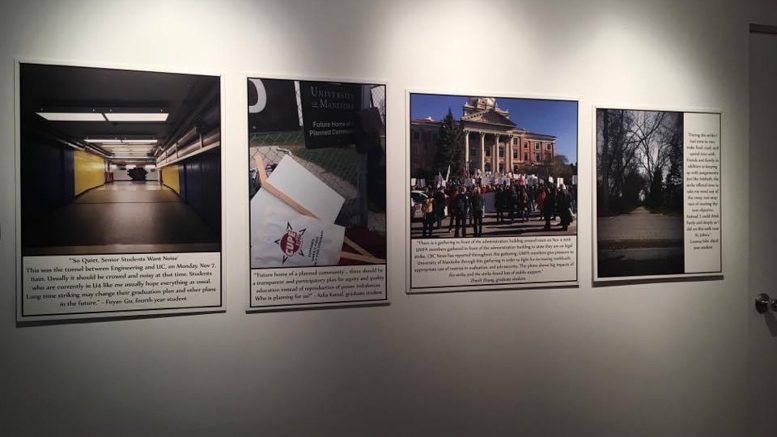The Gallery of Student Art’s (GoSA) latest exhibit, Our Voice, was showcased from March 6 to 10 to give some U of M students the opportunity to showcase how they were affected by the recent U of M Faculty Association (UMFA) strike through quotations and photography, employing a qualitative research method called photovoice.
All of the photographs collected were taken by students of varying backgrounds from a fourth-year environment and geography course called Applied Qualitative Research: Making a Difference.
Over the course of the strike last November, the drama between UMFA and the U of M administration was largely publicized and discussed. Some students, on the other hand, often found themselves caught in the middle of the conflict.
The strike went on for three weeks, after negotiations that had been ongoing since the spring broke down. Students were left in an odd state of purgatory while the negotiations between UMFA and the administration were at an impasse. The fall term was extended into the New Year, the winter term started later, and students’ graduation dates were pushed back, affecting travel plans, job opportunities, and many more aspects of students’ lives.
Student photographers captured different student perspectives of the strike. One student captured the serenity accompanied with the suspension of university responsibilities. Another showed a science student attempting to scrape off a “Students Support UMFA” sticker in resistance to the “formal” stance taken by the University of Manitoba Students’ Union (UMSU) on students’ behalf.
One international student who participated in the project noticed the absence of other international students in the protests. There were images of the picket line, of students themselves, and of the silent, empty campus.
Leanna Fehr took the strike as an opportunity to unwind and reflect, capturing her sense of peacefulness with a shot of her walk to St. John’s absent of people in the middle of the day. Fuyan Gu captured the absence of students differently, with an eerie shot of the empty tunnel between the Engineering complex and University Centre.
One student, Sarah Flattery, offered a photograph of a tipi captioned with the explanation of how it can be used as a metaphor for her solution to the strike. “When all the [tipi] poles stand in a circle leaning on one another they become even stronger and can withhold [sic] any storm and all are equal. This represents the possibility if all of the university staff, students, unions and associations working together and supporting one another they can accomplish many goals […] only if they work together,” read her caption.
Our Voice captured a wide range of emotions felt during the strike. Anger, frustration, humour, relaxation, and stress were showcased through the different perspectives. These photographs and captions, while valuable, did not offer much depth in the motivation behind why students did or did not support the strike, and a very limited number of voices were captured.
This is understandable, given the small amount of students involved in the project. However, it would be valuable to have a project with a wider scope to truly capture a faculty strike’s impact on students, as well as the way students perceive this disruption of their lives.


